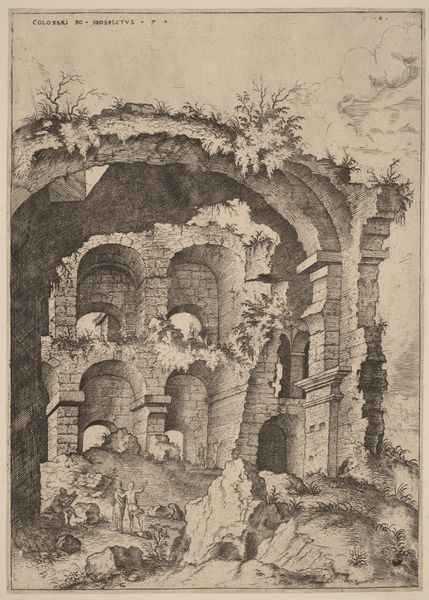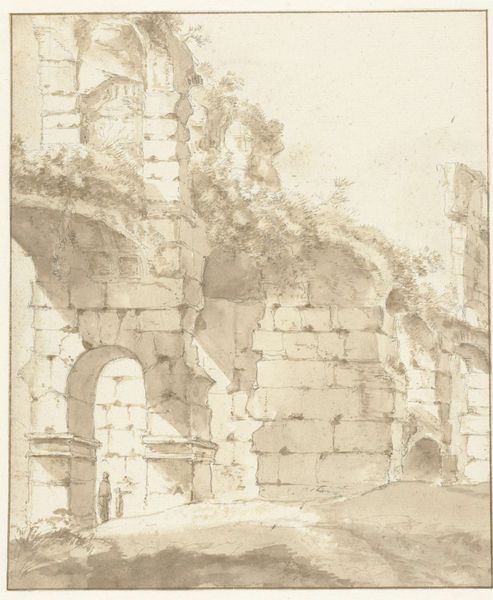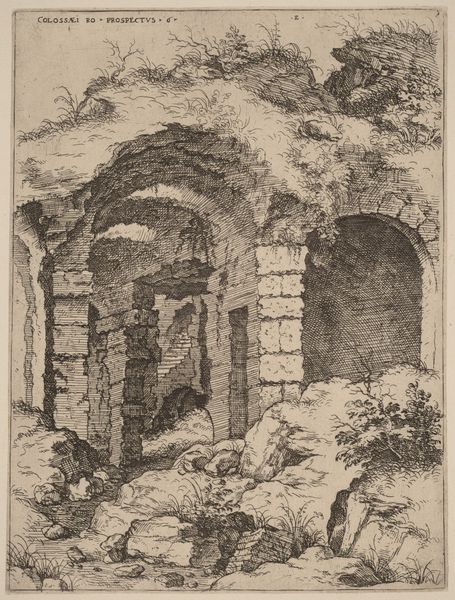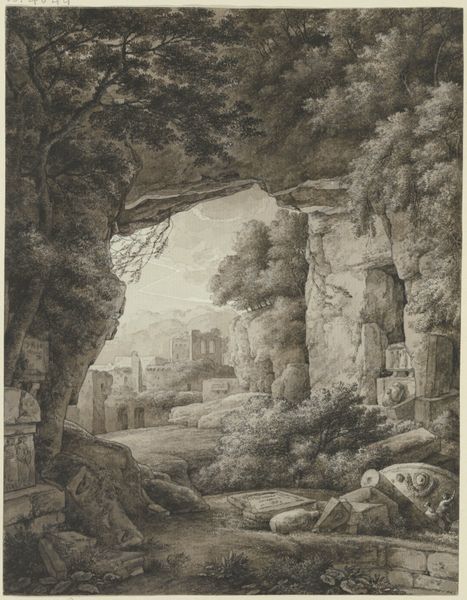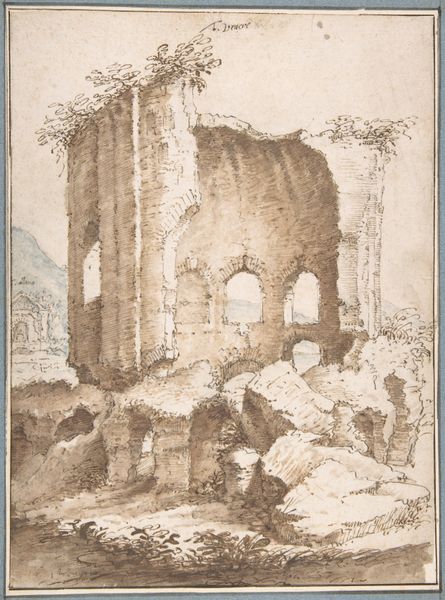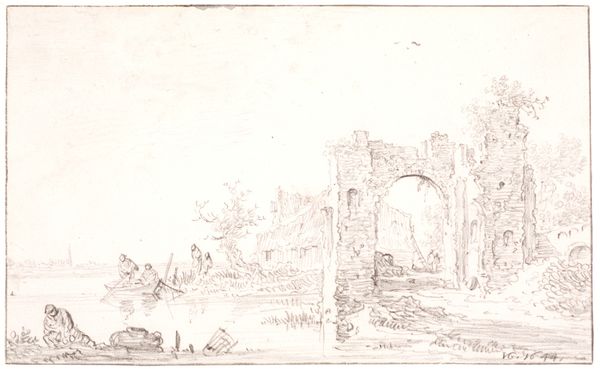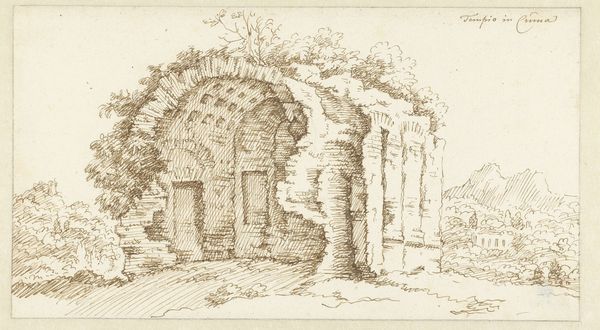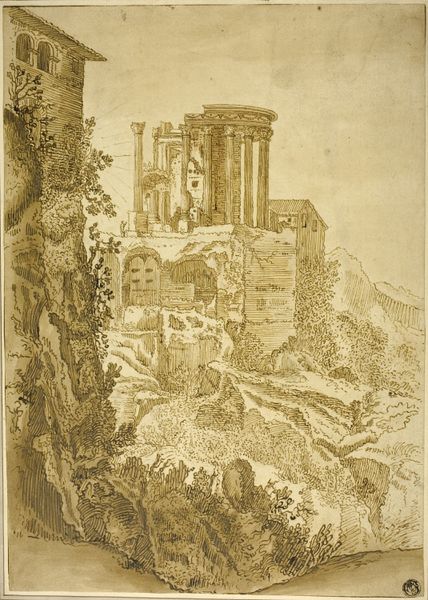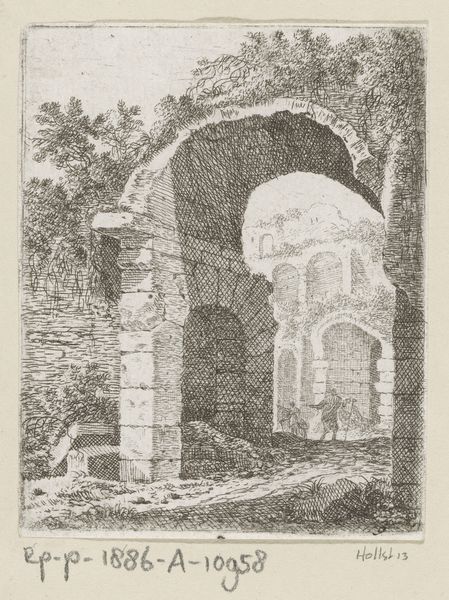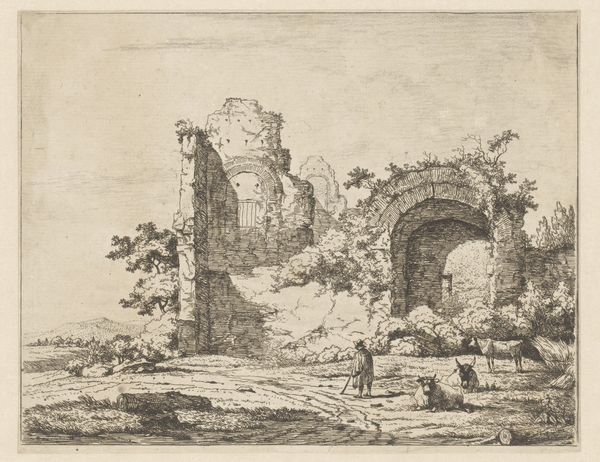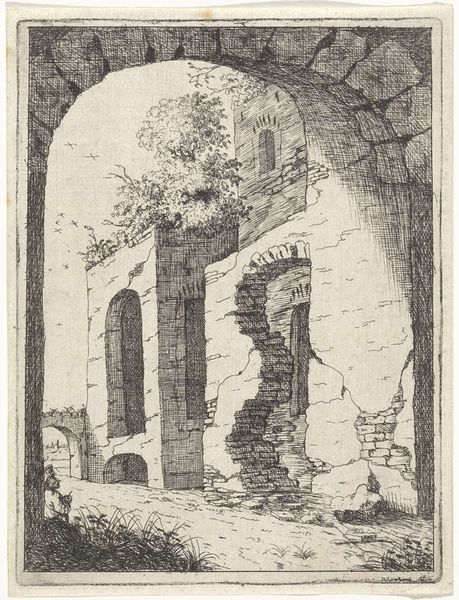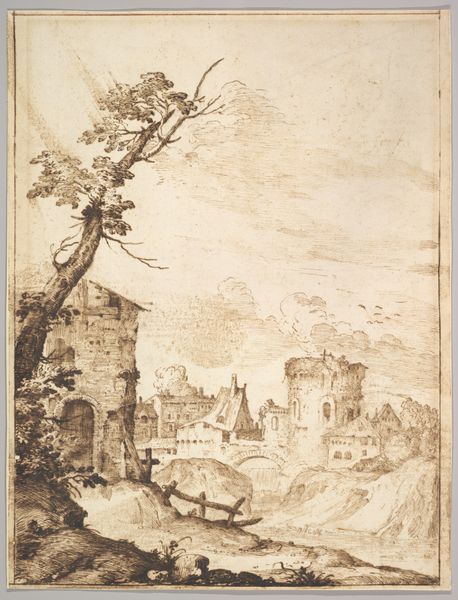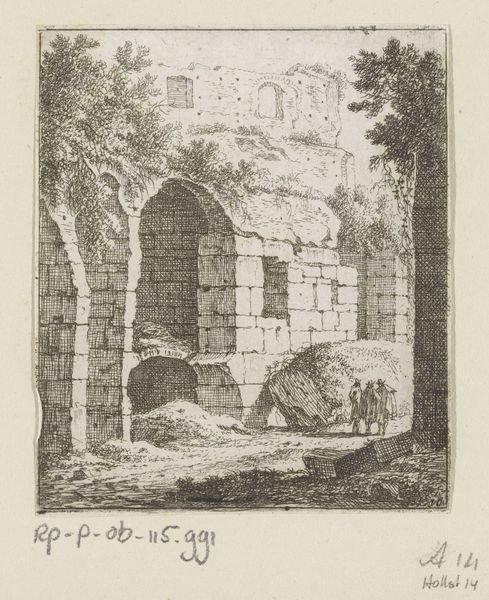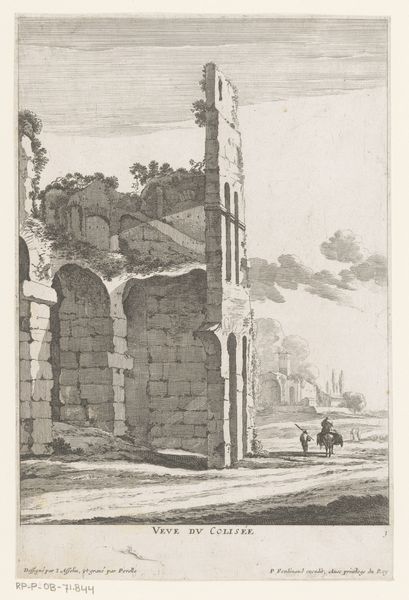
drawing, print, etching
#
drawing
# print
#
etching
#
landscape
#
etching
#
form
#
romanesque
Dimensions: height 275 mm, width 195 mm
Copyright: Rijks Museum: Open Domain
Curator: This etching, entitled "Romeinse ruïnes," dating from between 1651 and 1693, is attributed to Johann Franz Ermels the Elder. What do you make of it? Editor: The scene is dominated by these arches and fragmented walls, softened by creeping vegetation. I immediately think about impermanence and the cycles of ruin and rebirth. It evokes a contemplative mood, almost melancholic. Curator: The artist uses etching to suggest depth, light, and decay in this imagined Roman ruin. Note the texture achieved through varied line weights and the layering of marks. How do you interpret the significance of the ruined architecture? Editor: Well, these Roman ruins symbolize more than physical decay. They carry echoes of lost empire, fallen gods, and the fragility of human ambition. Artists throughout history have depicted them to remind us of time's passage and perhaps, even mortality. These arches once represented triumph, but now they are but fragments consumed by time. Curator: I find it interesting how the process of etching mirrors the artwork’s subject. Acid biting into the metal plate replicates the eroding effect of time on the stonework itself. Do you notice how Ermels uses the white of the paper? Editor: Absolutely! That bright paper showing through emphasizes a haunting contrast. The symbols create a subtle suggestion of enduring memory against oblivion. These stark walls whisper, suggesting that, from grand power, only stories and faint marks on a page can remain. Curator: Considering its method of creation, this landscape becomes less about representing the thing itself, but how material and labor help create something lasting. That etching embodies the history of both a civilization and the artistic tradition of capturing its memory. Editor: Precisely, it brings these dialogues between eras closer to one another, questioning our perceptions of what it means to create and endure through shared memories. Curator: A fascinating perspective, enriching how we consider this artwork, through material process as a testament to permanence.
Comments
No comments
Be the first to comment and join the conversation on the ultimate creative platform.
